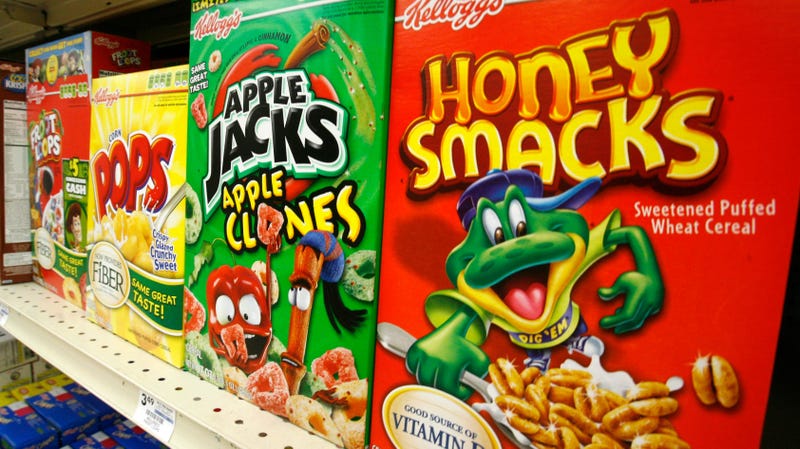 Image: Gene J. Puskar (AP)
Image: Gene J. Puskar (AP)
Public health experts have been warning people since June to stay away from Kellogg’s Honey Smacks cereal, as it can possibly give you a nasty case of salmonella poisoning. But people are still eating the frog-branded cereal, and they are unfortunately getting sick.
On Monday, the Centers for Disease Control and Prevention updated its tally of victims believed to be sickened by the outbreak so far. As of August 30, at least 130 people from 36 states have been infected with the same strain of Salmonella Mbandaka since March 3. No deaths in connection to the outbreak have been reported, though 34 people have been hospitalized.
The CDC and other federal health agencies announced their investigation of the outbreak on June 14; that same day, Kellogg’s recalled all of its Honey Smacks cereals. But cases have continued to trickle in since then. Between July 12 and this latest announcement, 30 more people were found to have fallen ill. And it’s possible more cases that happened after August 4 have yet to be found and reported.
Despite the recall, which applied to all Honey Smacks cereal on the market with an expiration date of June 14, 2018 to June 14, 2019, it is possible that products with earlier expiration dates could still be contaminated. More recent victims, according to the CDC, have also reported eating cereal that had been left behind in their home.
Because of that, the CDC has reaffirmed its warning that consumers not eat any Kellogg’s Honey Smacks cereal for the time being, regardless of when it was bought or if eating it before didn’t make you sick. Those who empty their cereal into another, unlabeled container and can’t remember if it contains Honey Smacks should throw it out just in case, the CDC added. And these containers should be thoroughly washed afterward with warm soapy water.
Retailers, of course, should also not sell or serve any Honey Smacks cereal.
Thankfully, Salmonella is typically just a painful nuisance. Within 12 to 72 hours after infection, it causes diarrhea, fever, and stomach cramps in most people, which can last four to seven days. Rarely, it can turn into a severe, life-threatening infection, especially in vulnerable groups like the very young and old, as well as those who are pregnant or immunocompromised.
[CDC]